Today’s Tidbit... Coaches Sitting On Their High Horses
Football coaches are a complicated lot, and the good ones inspire their players by demonstrating that their commitment to the team equals or exceeds that of the players. Just as they ask team members to play when hurt, they continue coaching when they are injured or in poor health, though sometimes against medical advice.
An ailing coach today would likely ride an elevator up to the press box, spending their time in the confines of a warm booth, but old-school coaches found other ways to roam or remain stationary on the sidelines.
Rather than ride the pines when fighting rheumatism during his coaching career, Amos Alonzo Stagg rode various devices, including a motorcycle sidecar in 1914 and an automobile in 1919.
Henry Marting coached the WWI-era Camp Sherman football team and injured his leg during a game in Cincinnati. To continue coaching, he requisitioned a horse and rode the sidelines in the saddle.
Captain John Beckett used a similar tactic at Quantico in 1922. Beckett, who captained Oregon in the 1916 Rose Bowl and the Marine Island Marines in the 1918 Rose Bowl, coached eight different Marine teams spread across Quantico’s mile-long parade ground. Rather than walk or run from team to team, Beckett also went the horseback route.
Knute Rockne, who suffered from phlebitis, dealt with his disability by coaching from a wheelchair or an automobile with a loudspeaker device.
After 40 years of coaching, Pop Warner sometimes tired. To rest his weary legs during his final head coaching stint, Warner rode a trusty steed when mentoring the Temple Owls.
The following year, Glenn Thistlewaite, who had a long coaching career at Earlham, Northwestern, Wisconsin, and Richmond, was handling the Spiders when he rode the sidelines in a car following an appendectomy in 1935. Gonzaga’s Mike Pecarovich and Louisiana Tech’s Eddie McLane did the same in 1937 and 1938.
Finally, there was Perry Deakin, the coach at Southeastern High in Detroit. The coaches mentioned previously used a horse or machine for conveyance due to injury or the physical distance between the teams they supervised. However, Detroit Southeastern High’s Perry Deakin seems to have really liked horses, so he occasionally busted a bronco, including at halftime of their 1945 game with Miller High.
Whatever his reason for saddling up, Southeastern beat Miller 19-0 that day, which means he got the job done in Detroit with but one horsepower.
Football Archaeology is reader-supported. Click here to buy one of my books, donate, or otherwise support the site.


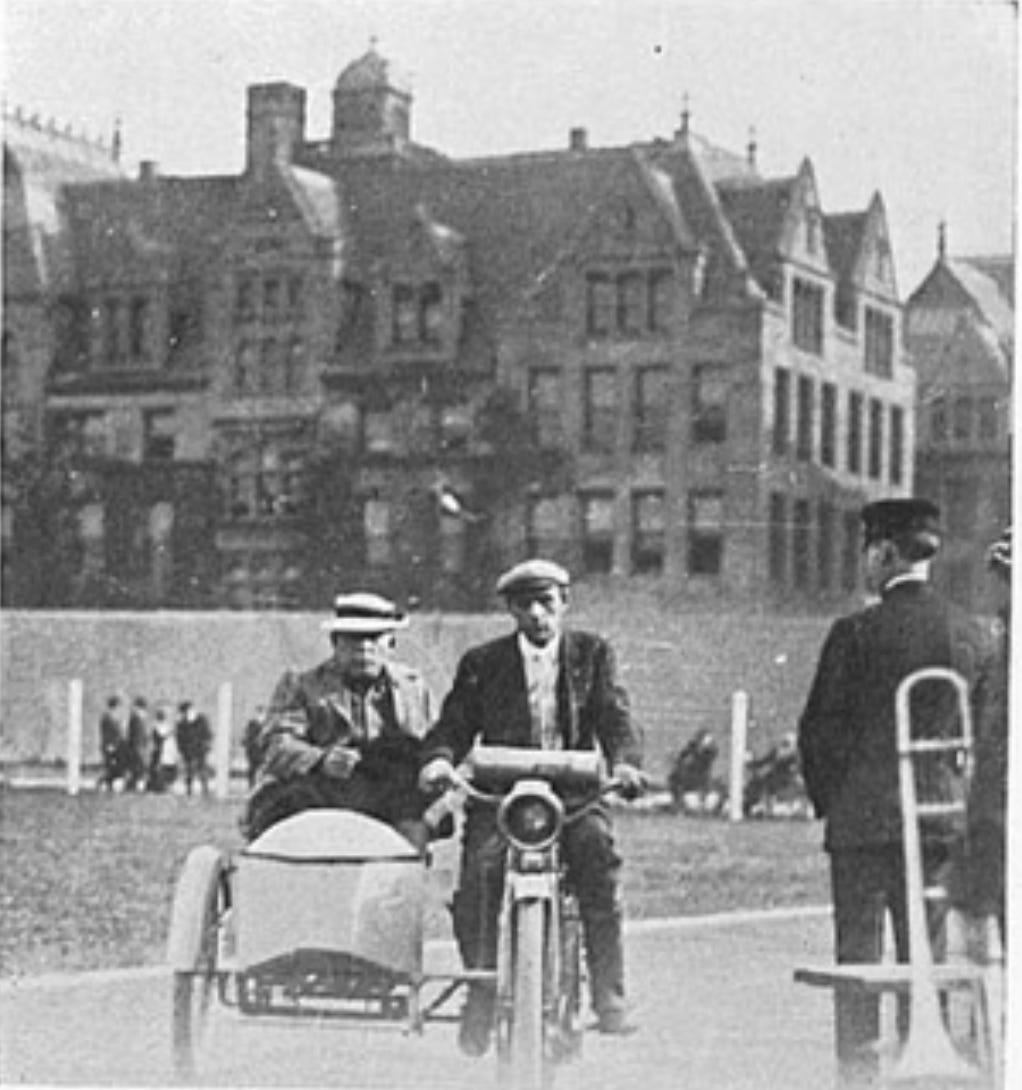
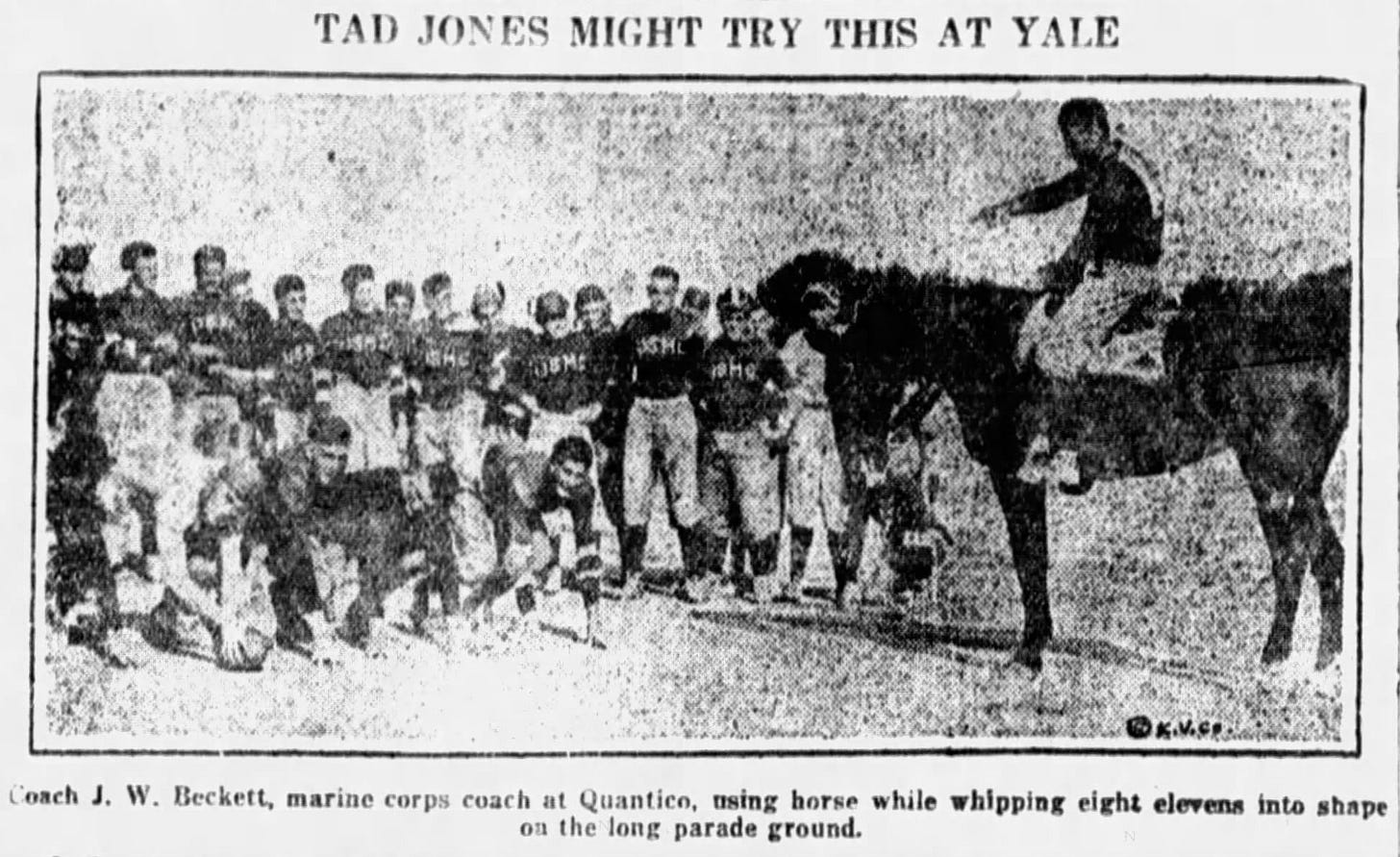
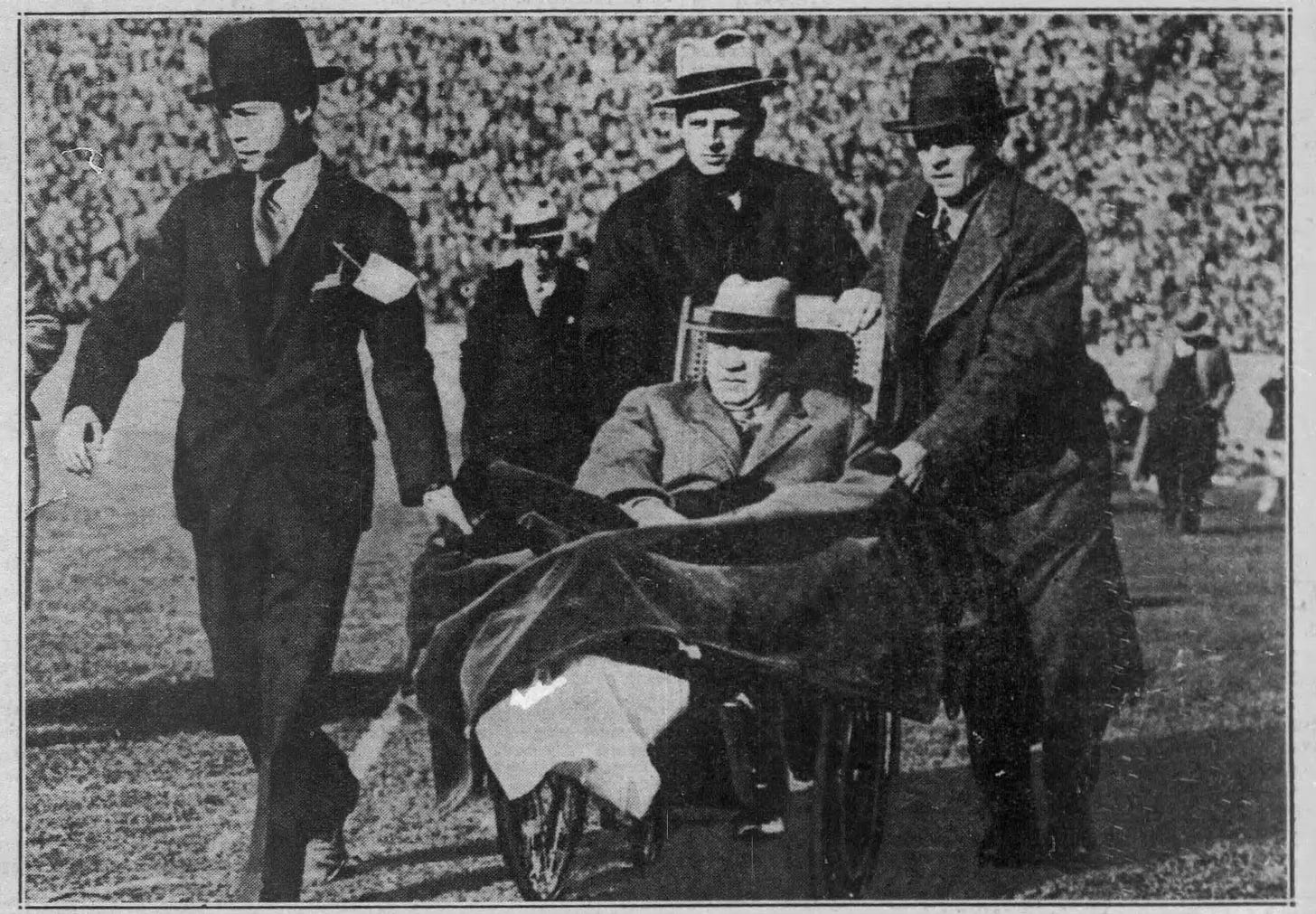
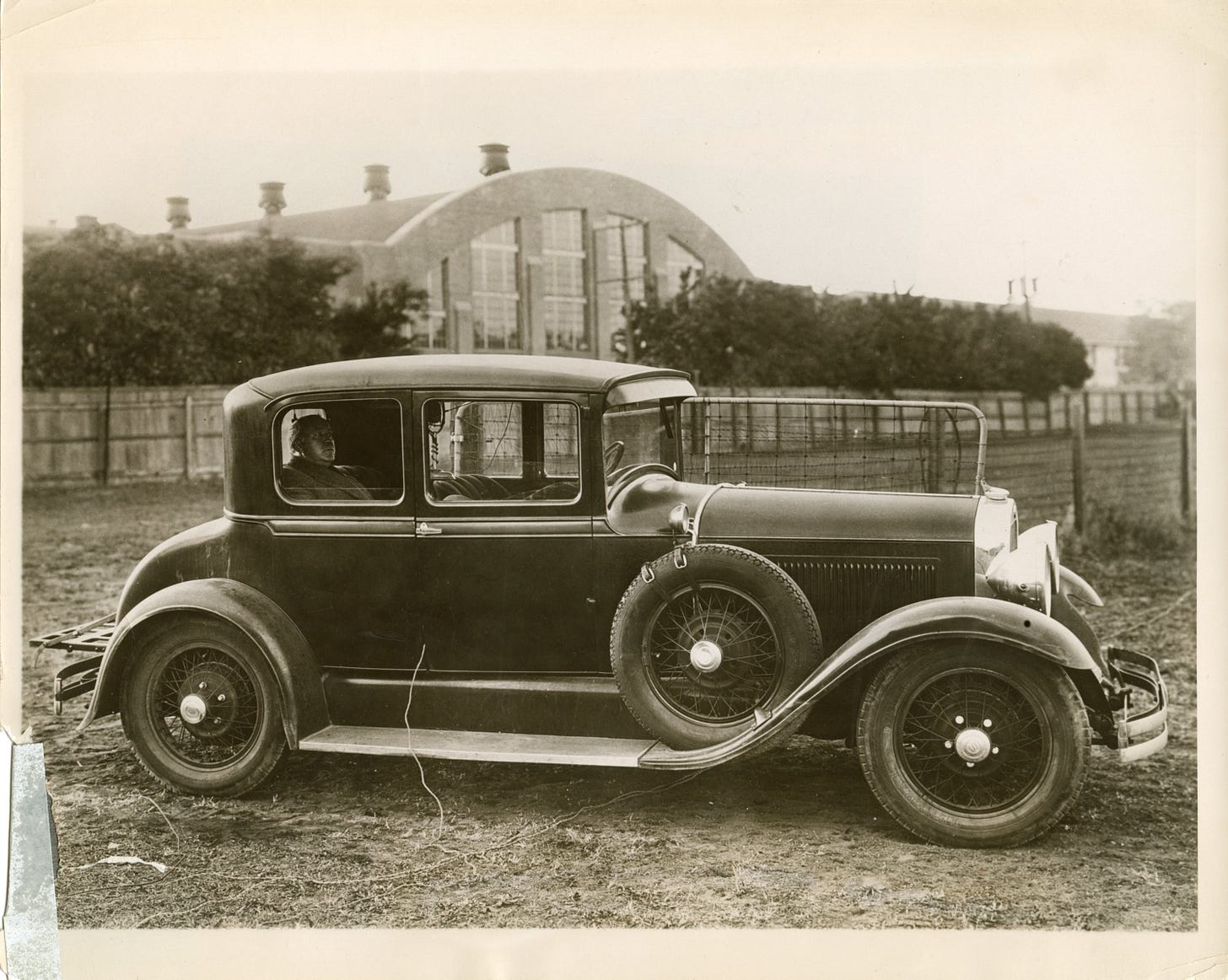
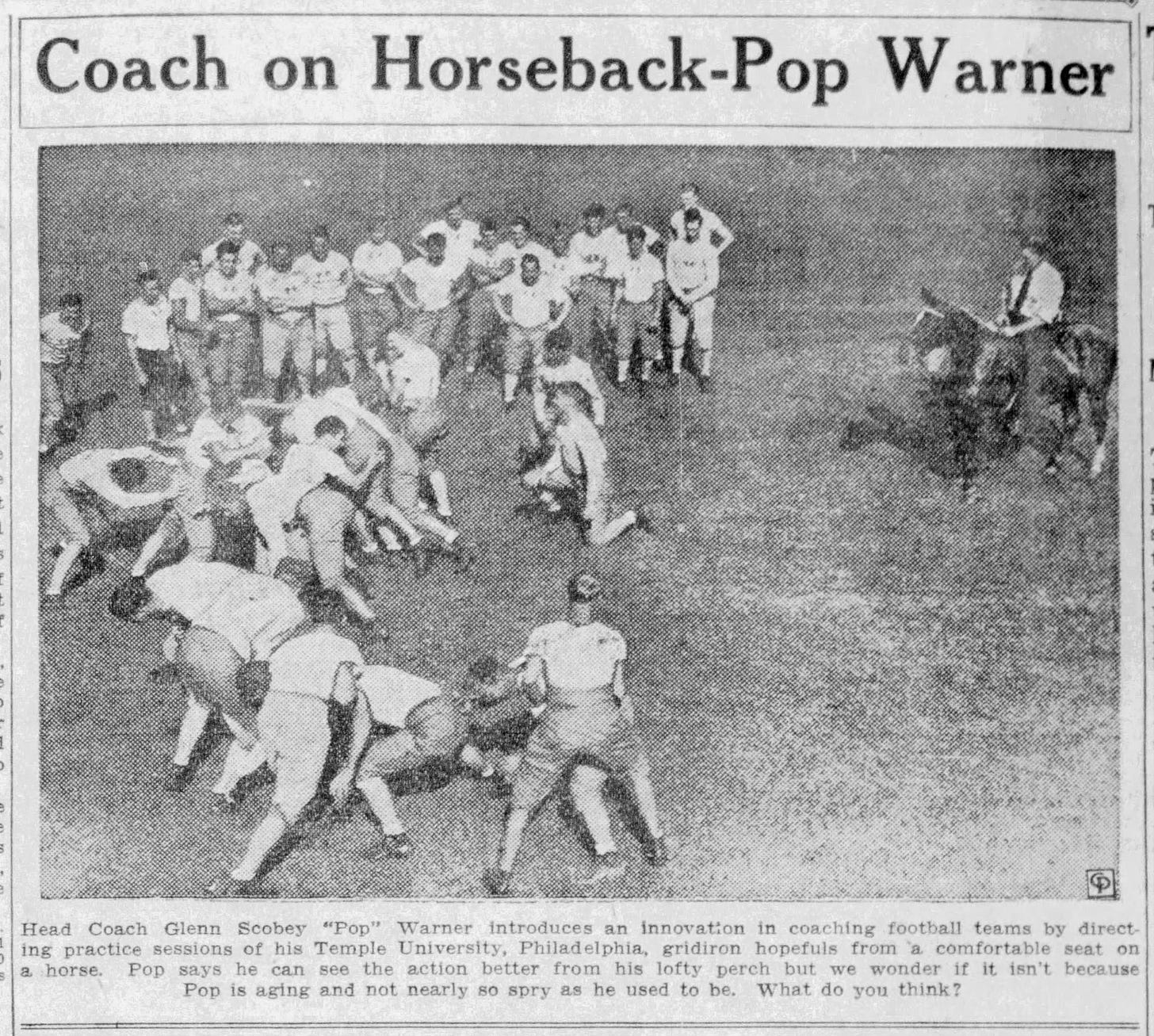
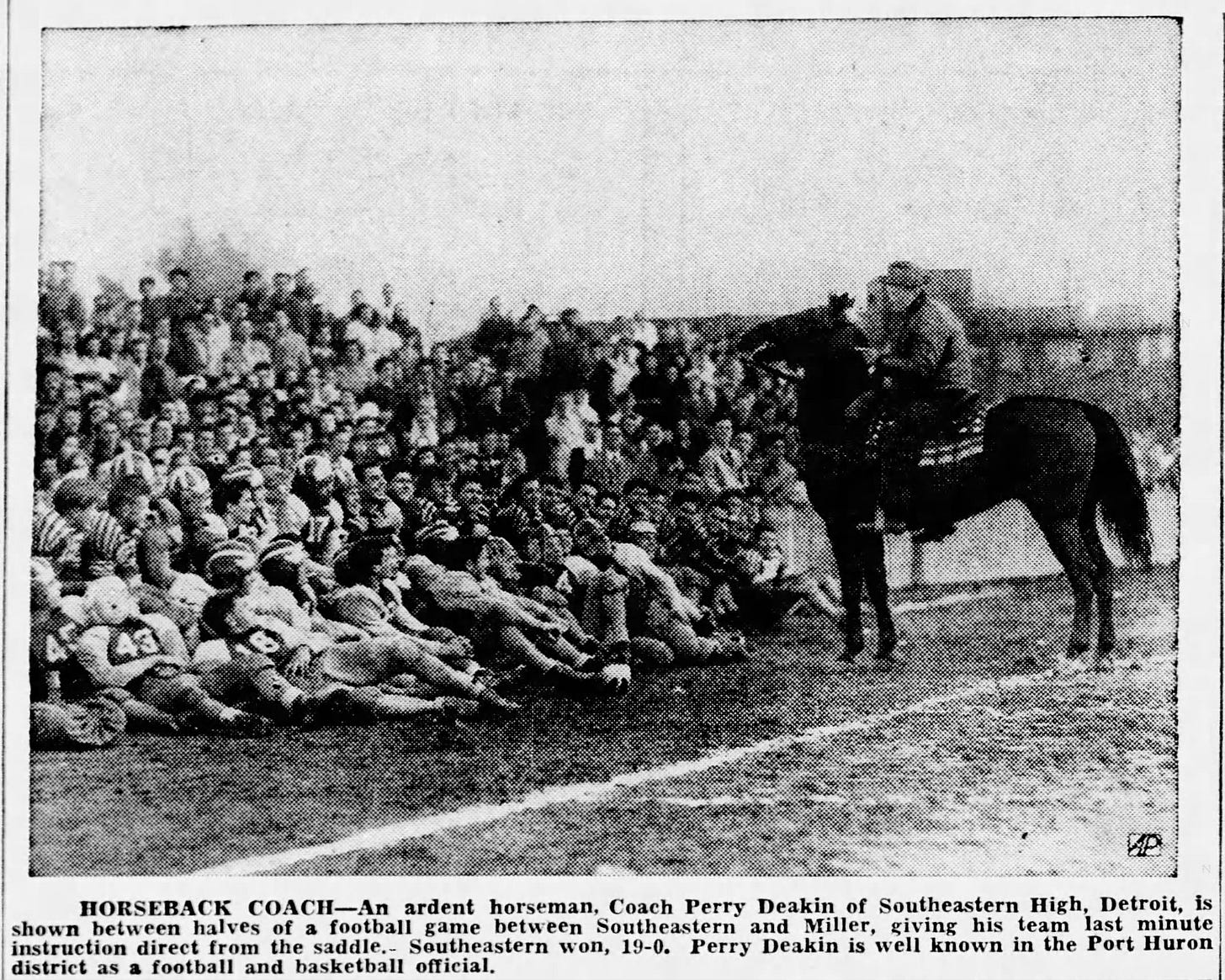

When I see CFL teams playing in the dead of winter towards the end of the season, I have to wonder if they are at risk for frostbite. The coaches seem to be more likely to get it, though...
Wow, this is great stuff. Who would have thought about or remembered these aspects of how coaches could keep an eye on their players at practices when they were unable to walk the grounds!